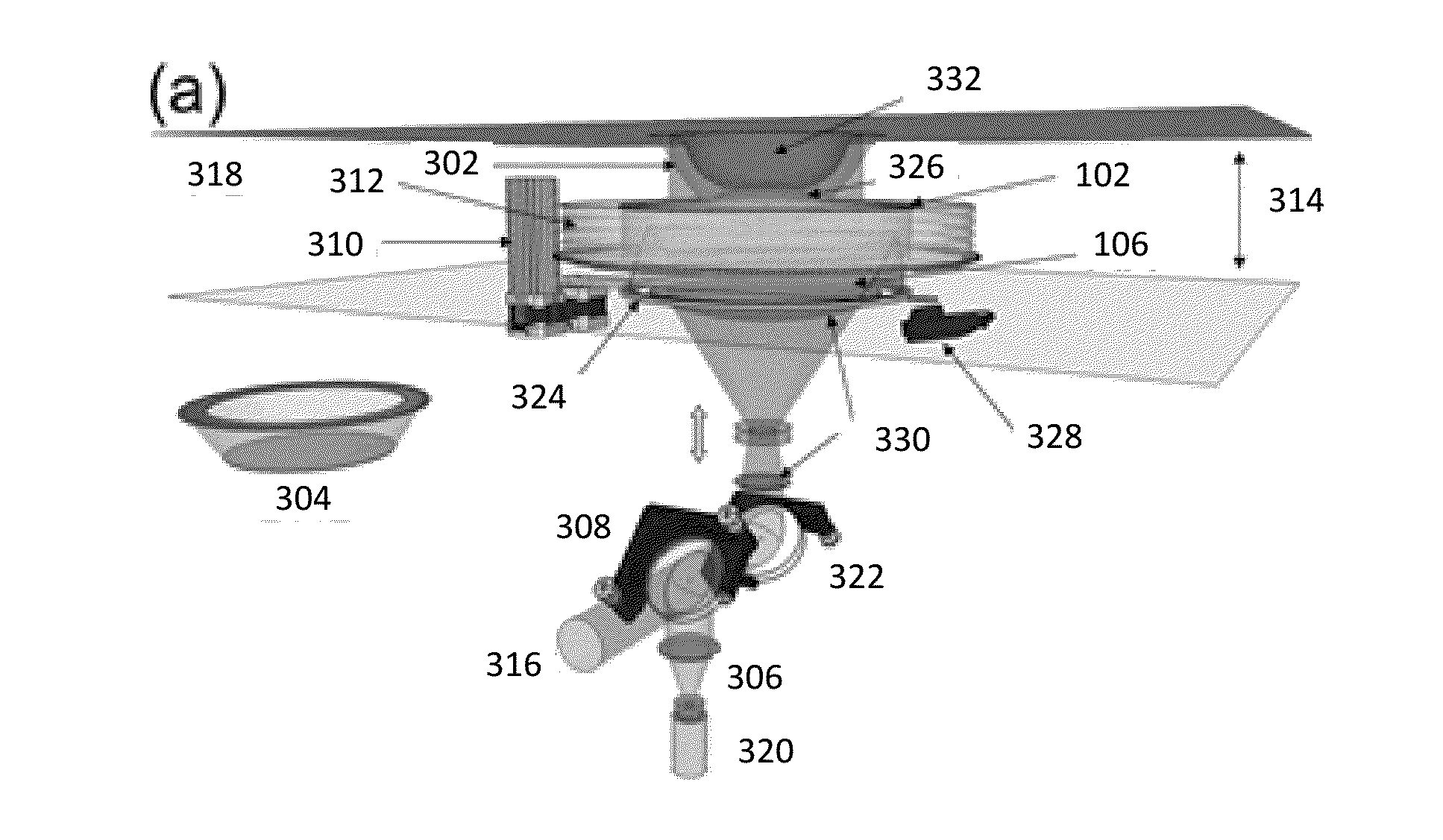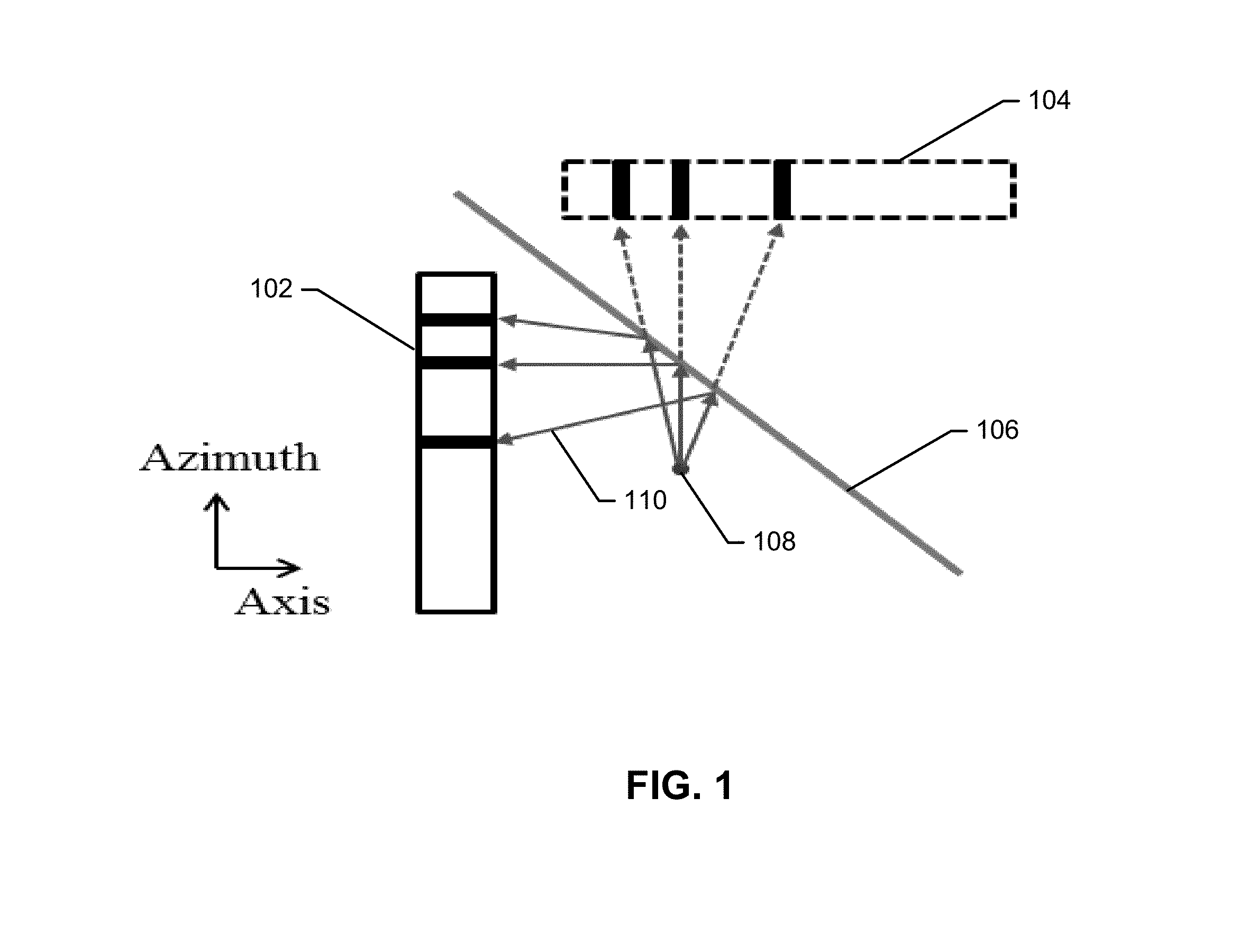Photoacoustic computed tomography with an acoustic reflector
a computed tomography and acoustic reflector technology, applied in the field of photoacoustic computed tomography with an acoustic reflector, can solve the problems of not being as easily integrated with ultrasound systems, specialized full-scale, and relatively expensiv
- Summary
- Abstract
- Description
- Claims
- Application Information
AI Technical Summary
Benefits of technology
Problems solved by technology
Method used
Image
Examples
example 1
Small-Animal Imaging
[0055]Small-animal whole-body imaging using the system may use a 512-element full-ring transducer array. Excitation was provided by a Ti-sapphire laser tunable from about 700 nm to about 900 nm. With the combination of a conical lens and an optical condenser, a ring-shaped light beam was projected around the animal body at an about 60° incident angle. The thickness of the light ring was about 5 mm, and the diameter may be sized to accommodate the cross-sectional diameter (about 2 cm) of the animal. The maximum light intensity at the surface of the animal was about 15 mJ / cm2, which is below the ANSI safety limit at the chosen wavelength.
[0056]To cover a broad range of applications, two system configurations as illustrated in FIGS. 5A and 5B and FIGS. 6A and 6B were used for trunk and brain imaging. In FIGS. 5A and 5B, the system elements include 502: animal holder; 518: breathing mask; 504: heated coupling medium; 514: conical lens; 516: laser beam; 706: metal fra...
example 2
[0062]A commercially obtained Philips linear array was operated in B-mode to collect photoacoustic signals, a 45-degree acoustic reflector (glass) was used to form a virtual array, and a laser beam aligned orthogonally to the drawing illuminated the water tank from the top (not shown in the figure).
[0063]In addition to the conventional linear array, a quarter inch thick borosilicate glass plate (8476K72, McMaster-Carr, Los Angeles, Calif.) functioned as an acoustic reflector to form a virtual linear array. The glass plate had a sound speed of 5790 m / s for longitudinal waves and 3420 m / s for shear waves. When the angle of incidence was greater than 26° (the critical angle for Rayleigh surface waves in borosilicate glass), the incident PA waves were completely reflected without distortion. For angles of incidence between 0° (perpendicular incidence) and a longitudinal critical angle of 14°, about 80% of the pressure of the incident PA waves reflected with no phase change, ...
example 3
Hair Phantom
[0066]To experimentally validate the reconstruction technique using the system described in Example 2, a phantom consisting of four human hairs was imaged using the system of Example 2 at different angles on the azimuth-axis plane (FIG. 2A) and the phantom image was reconstructed under different conditions. FIGS. 2A, 2B, 2C, and 2D show PAT images of a hair phantom. The dashed-line indicates the position of the acoustic reflector. FIG. 2B is an image acquired without the presence of the acoustic reflector. FIG. 2C is an image acquired with the presence of the reflector—as indicated by the dashed-line—but reconstructed without incorporating the virtual array. The linear array was unable to detect the horizontal hair, because the cylindrical PA wavefront from that hair propagated in the azimuth (vertical) direction and hence missed the physical array unless reflected using the acoustic reflector. The reconstruction incorporating data from the virtual array successfully ove...
PUM
 Login to View More
Login to View More Abstract
Description
Claims
Application Information
 Login to View More
Login to View More - R&D Engineer
- R&D Manager
- IP Professional
- Industry Leading Data Capabilities
- Powerful AI technology
- Patent DNA Extraction
Browse by: Latest US Patents, China's latest patents, Technical Efficacy Thesaurus, Application Domain, Technology Topic, Popular Technical Reports.
© 2024 PatSnap. All rights reserved.Legal|Privacy policy|Modern Slavery Act Transparency Statement|Sitemap|About US| Contact US: help@patsnap.com










